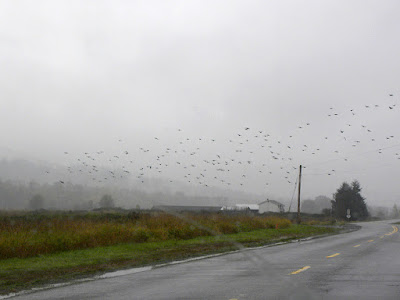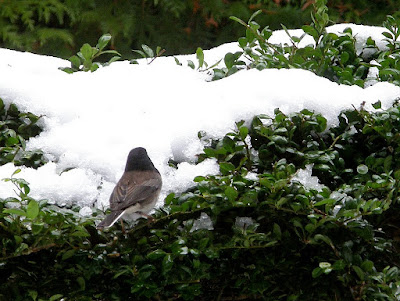I figured Alaska and Hawaii would do just fine, and sent my grandkid off to bed, then went to fix my daughter's computer, still running Windows 3.1. It was ok, except that it had forgotten every setting she'd ever entered. Mine, at home, on Windows 98, was happily chugging away, on time and on my settings. The world would go on.
And now, ten years later, we slide into the new decade without fanfare. Unless you count a blue moon barely to be seen through the clouds (if that) and a partial eclipse not visible on this continent as excitement. Now all the doom and gloom seems to be apportioned out evenly, from one year end to the next. So does the joy, compensating.
"May you live in interesting times," goes the old curse. I don't know if it's really so bad; the times have always been interesting, as far as I can remember. I was a war baby, born during WWII; I was in high school when Sputnik went up and the west went into a tizzy. I saw the student unrest of the '60s from close-up, while I was in university, and the psychedelic '70s. The '80s? I remember noticing, with some amusement, that 1984 was no better nor worse than 1983. And so it goes. (That phrase always brings back Larry Niven's hell, in "Inferno". That section's suffering was sheer boredom, though.)
The first decade of this century has been interesting enough for me. In terms of politics, the environment, our future survival, it has been a roller coaster swooping from hope to despair and back often enough to keep me dizzy. Personally, I have a growing extended family and all their doings: weddings and births and trips, graduations, new businesses, new toys. I'll never get a chance to be bored, that's assured.
And I started blogging. April 1st, of 2006. Moved to Blogger. Then I bought a camera, and another. Laurie went digital. I updated my computer equipment, became mobile. Started the aquarium. And lately, bought my first digital microscope. (There will be more, and better ones, I'm sure.)
And found there is a world out there of people interested in the same weird stuff that fascinates me: spiders and worms and creepy crawlies of all types. Hermit crabs and amphipods. Chickadee antics and cute doggies on the beach. Rain and rocks.
Things like these:
Starlings through a rainy windshield. Mud Bay area.
Amphipod in my aquarium.
Maaaa! Near Nicomekl River outlet, Delta
Slug leaving well of pitcher plant.
Mallard, Sun Yat Sen gardens, Vancouver
Spider on my throw rug.
Yay, world!
So; interesting times. May they continue!
Happy New Year, everyone. See you in 2010!

















































